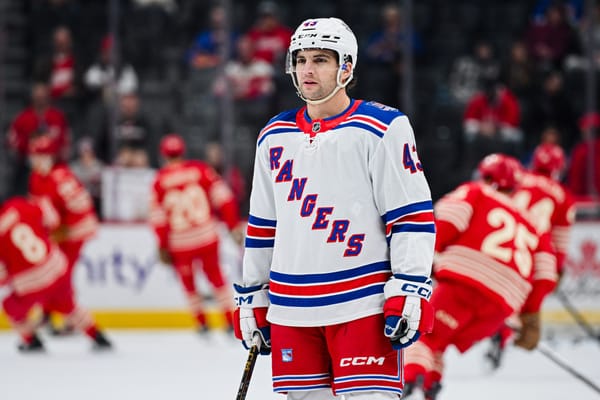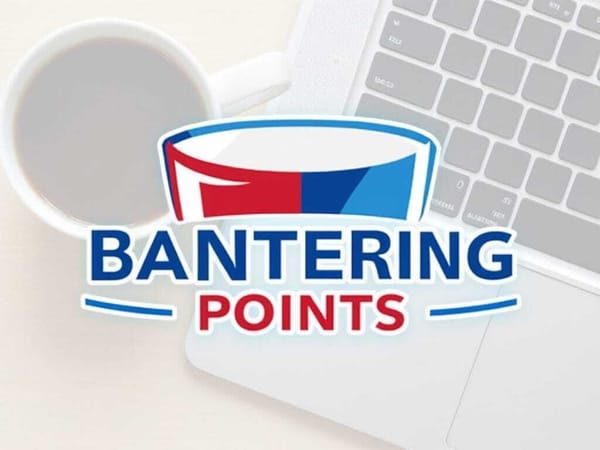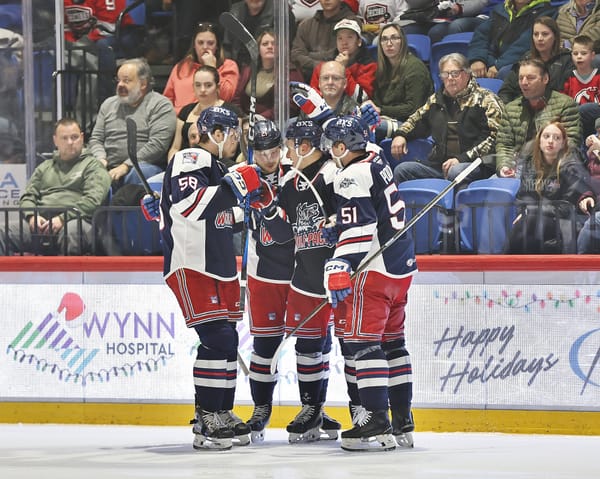Blueshirt Banter 2019 New York Rangers Prospect Rankings: 25-21
25. Ryan Lindgren, Left Defense
2018 Ranking: 25
Age: 21
Acquired Via: Trade (2018)
I thought Lindgren was one of the better performing defensemen in Hartford in the first half of last season, but that speaks more to the train wreck going on there than it does to Lindgren’s development. We already knew that he is a strong, mobile skater and that he loves to throw the body. However, the jump to pro did prove overwhelming at times, and he would get caught out of position while trying to engage physically. More concerning is that his improvements in terms of playing the puck were limited. His college team, Minnesota, played on an Olympic-sized rink. The adjustment to a smaller rink and faster opponent took its toll, as he made too many costly turnovers. He registered 12 assists (0 goals) in 65 games, which isn’t great production to begin with, and a few of those points were serendipitous in nature.
Lindgren did earn five games with the Rangers, and they did not go well. The Rangers were outscored seven-to-one when he was on the ice at five-on-five. He posted a 39.8% Corsi (shot attempts percentage) at five-on-five as well. And, he took three penalties. To be frank, that’s just about as bad as it could have gone.
There is some plausible deniability in Lindgren’s favor. First, again, he was one of Hartford’s better defenders. A rising tide lifts all boats, and so a better roster and coaching staff next season could see his him play legitimately well. And as bad as his NHL stint was, it was a small sample as a 20/21-year-old on a team that was horrific defensively across the board.
I think it’s possible Lindgren develops into an NHL defenseman, and in fact, he offers far more certainty than many of the players ranked immediately ahead of him on my list. However, I still think his future is still far from guaranteed, and I think his upside is limited to a #6 defenseman. If he can pull that off, then great! If not, then there are numerous ways to acquire depth for cheap; see Freddie Claesson. As it relates to prospects and roster building, I think upside is more valuable.
24. Riley Hughes, Left Wing
2018 Ranking: 30
Age: 19
Acquired Via: 2018 Draft (Seventh Round)
Hughes, taken with the second-to-last pick of the draft in 2018, was largely an enigma. Save for two games in the USHL and a few showings at junior tournaments, Hughes’ resume mainly consisted of high school prep hockey in New England. Not uncharted territory for an NHL draft pick, but still a weak litmus test for future NHL viability. Do we have a better grasp of Hughes following his post-draft season in a more legitimate league like the BCHL? Well, yes and no.
In order to maintain his NCAA eligibility, Hughes played for the Victoria Grizzlies in the BCHL last season, which is an elite Junior B second-tier league in Western Canada. For the Grizzlies, he provided hearty production, potting 24 goals alongside 34 assists in 53 regular season games. In most games his offensive ability was evident. He’s a very good stickhandler, he’s shifty skater, and he possesses a hard wrist shot that can beat goalies from the top of the circles.
Here is the problem; Hughes ranked third on what is perhaps one of the most dominant lines in recent BCHL history. He was centered by 2019 first-round pick Alex Newhook, who was the league’s best player by a landslide. On the other wing was Alexander Campbell, who out-produced Hughes and was selected early in the third round by Nashville this past June.
Hughes’ BCHL numbers were good, but not great, and almost certainly influenced heavily by his linemates. We’re going to get a better understanding of his abilities once and for all next season, when he joins Northeastern in the NCAA. For now, it’s worth acknowledging Hughes as a competent NHL prospect while also maintaining a healthy dose of skepticism.
23. Sean Day, Left Defense
2018 Ranking: 14
Age: 21
Acquired Via: 2016 Draft (Third Round)
Sean Day’s season can be analyzed by splitting it right down the middle. The first half of the 2018-2019 campaign was outright disastrous. He started the season in Hartford, where he immediately looked out of place and was soon banished to the ECHL. He was returned to the AHL in late December but still struggled mightily. Through 23 games, he had just one assist on the scoresheet. As I’ve alluded to in regards to Lindgren and others, even shutdown defensemen have to put up some offensive production in the AHL in order to suggest NHL viability. What does meager production mean for someone like Day, whose offensive abilities are supposed to be an asset?
His defensive performance was equally disastrous, as the speed of the pro game seemed to take him by surprise. Too often he was caught out of position, and sloppy footwork was even leading to him getting beat on 1v1 rushes; unheard of for him in junior hockey.
Just when it seemed about time to pull the plug on any hopes for Day, he turned the corner. Day started playing better, which turned into an increased role, which turned into better production, and so on. Call-ups for John Gilmour, Libor Hajek, and Ryan Lindgren at different times also gave way to Day for a bigger role in Hartford. Suddenly, Day was playing with confidence. His patented rushes with the puck returned with a vengeance. He was making plays in the offensive zone. He still displayed some warts on the defensive side of the puck, but those were less frequent.
After just one assist in his first 23 AHL games, Day produced two goals and ten assists in the final 23. In fact, I’d argue that the best version of Day looked better than any defenseman in Hartford save for Gilmour. One might wonder what his production might have looked like on a team that wasn’t stripped of its parts in the final 20 games or so.
Can Day build on the end to his season and put forth a consistent, productive sophomore AHL season? That’s been the type of question that has plagued him even before he was drafted. The depth chart in Hartford will likely be crowded next season and he’s going to have to earn his minutes. The time of making excuses for Day’s inconsistencies are over.
22. Adam Edstrom, Center
2018 Ranking: N/A
Age: 18
Acquired Via: 2019 Draft (Sixth Round)
Though I feel relatively confident that I have him in the right range for these rankings, Edstrom is an enigma who is hard to get much information on. He did play 15 SHL games for Mora last season, but he averaged just three minutes per game. He played for their SuperElit (U20 juniors) team, posting 11 goals and five assists in 20 games. Based on my research and talks with Alex and Tobias, Edstrom is a 6’6, 210 center who skates well for his size. He’s a scorer who is a bit of a baby deer right now; he has raw tools but lacks the composure and coordination to be as effective as he could be. That’s not exactly unheard of for a a teenager with that kind of size.
Edstrom is now property of Rögle of the SHL, and he will compete for a spot on the team for next season. He could end up playing at a lower level, however. In any case, 2019-2020 should offer better insight into Edstrom’s scouting report. From a bird’s-eye view, his numbers in the SuperElit are competent and he seems to have upside as a bottom-six NHL forward.
21. Eric Ciccolini, Right Wing
2018 Ranking: N/A
Age: 18
Acquired Via: 2019 Draft (Seventh Round)
For most NHL teams, a freshly taken seventh-round pick hovering around the top-20 would indicate a weak prospect pool. In the Rangers’ case, it highlights what a smart selection Eric Ciccolini was at 205th overall.
Ciccolini is a talented winger who can impact the game in a number of ways. He’s a B+ skater with rapid, choppy strides. He gets up the ice quickly and changes directions with ease; particularly with the puck. His defensive game is more about athleticism and pressure rather than reading the play. He forces turnovers on the forecheck, like this one (#19 in red).
Offensively, he is talented. He possesses a good wrist shot. He creates offensive with his speed and has the hands to keep goaltenders guessing.
Ciccolini played for the Toronto Jr, Canadiens in the OJHL last year, which is a quality junior league in Ontario. He started the season on fire, racking up a bunch of points. However, he floundered at the midseason World Junior A Challenge, which is a showcase tournament for scouts. From there, his production dropped off significantly, and he was in fact demoted to Toronto’s second line for parts of the season. One source I spoke to said that Ciccolini’s confidence took a big hit after the bad tournament showing.
The days of supreme talents like Pavel Datsyuk flying under the radar and falling to the end of the draft are long gone. Teams are better staffed, are caught up on the basics of prospect data, and have access to way more technology. If you’re the Rangers and you’re picking a player at 205th overall, you have to have a compelling, plausible story for why a guy that teams passed on 204 times is a legitimate NHL prospect.
I think Ciccolini offers a legitimate narrative. He has some great tools and has proven that, when he is on his game, he can produce. Posting 62 points in 48 OJHL games is pretty good, and how much better would he have done without the midseason confidence drain? On the evaluation side, there’s also a spotlight bias. Decision makers are not attending many OJHL games, but they are attending the big tournaments. Anyone can have a bad 4-5 games. It happens to Crosby and Ovechkin, so surely it could happen to a 17-year-old in juniors.
If the second-half of Ciccolini’s draft season proves to have been a temporary setback, then the Rangers might really have something here. He’ll be attending Michigan next season and he’ll have as many as four years to develop at a quality hockey program. He needs to become a smarter, more dynamic player. Relatively speaking, I think Ciccolini has a real shot of carving out an NHL career as a multi-faceted third-line forward.




